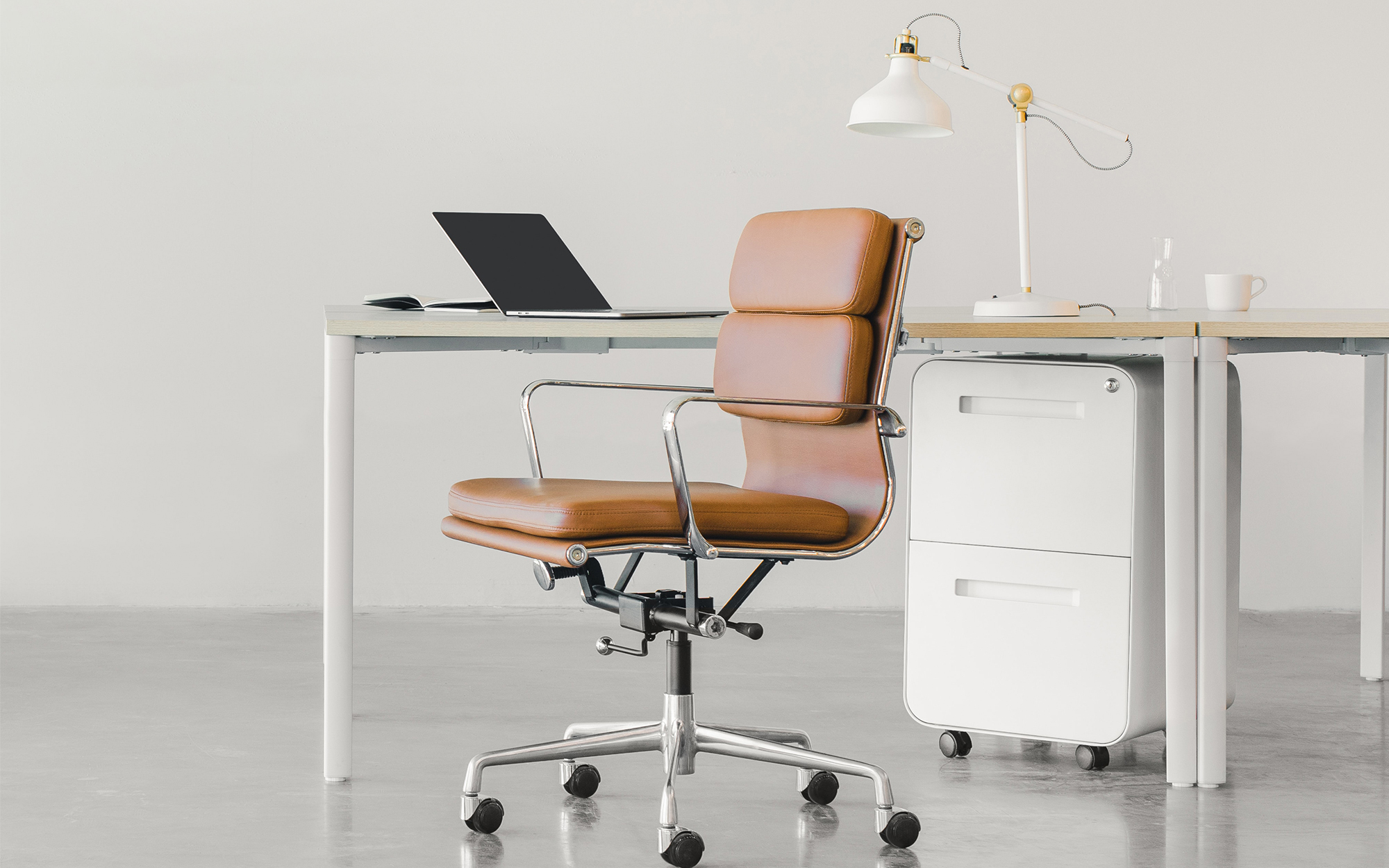Recent studies have estimated that the average person now spends around 80% to 90% of their time at home, which means that our indoor surroundings and living spaces are very important.
The personal spaces in our homes set the stage for many moments in our lives, both positive and stressful ones, so it’s crucial that they can comfort, support, and provide positive emotional energy.
In this article, we explore if your home interior design can impact your well-being, and if so, in what ways, whilst introducing the concept of neuroarchitecture.
What Is Neuroarhitecture?
Neuroarchitecture is defined as any environment which has been designed whilst following principles derived from neurosciences. Its aim is to create living spaces which benefit our memory, and improve cognitive capacity and mental stimulation, while simultaneously helping us to avoid stress.
This type of architecture studies the psychological and emotional impact that architecture and interior design can have on your well-being. Studying neuroarchitecture and its principles is a great starting point for finding ways how to be happier at home!
The Influence Of Interior Design
Designers and architects understand the influence that various interior designs can have on how an individual uses and experience them. When paired with neurological research, it is believed that buildings can be created to achieve a specific objective, for example, a less stressful office space, a more focused school environment, or a hospital that facilitates recovery. Considering there are so many different types of designs, it is worth researching the main properties and features of interior styles through the decades to find out more.
The challenge is to understand why there are places that encourage or hinder certain moods, which is more complex than just looking at the light and colour of a space or building to understand the influence on people’s frame of mind. The idea is to be able to apply these discoveries to the design and construction of living spaces to improve our well-being.
An interesting fact is that almost all past architecture and interior design movements have been chosen by a current aesthetic style or philosophy that drives them. However, neuroarchitecture is the opposite of this, as the movement embodies the people that will be impacted by design.
The Individual Preferences Considered In Neuroarchitecture
It is common knowledge that people respond to design differently. There is no universal reaction to one singular space, and neuroscientists always take this onboard when proposing their research and designs.
Different demographics, such as age, cultural background, and possibly gender, might dictate our personal preferences. However, there are some common problems faced by everyone when choosing a home that dates back to prehistoric times, where choosing the right location is the biggest. Whether this is for a bird trying to build a nest on a sturdy branch or a human choosing to live in the city for easy access, the principles remain the same.
How To Understand Popular Furniture Designs
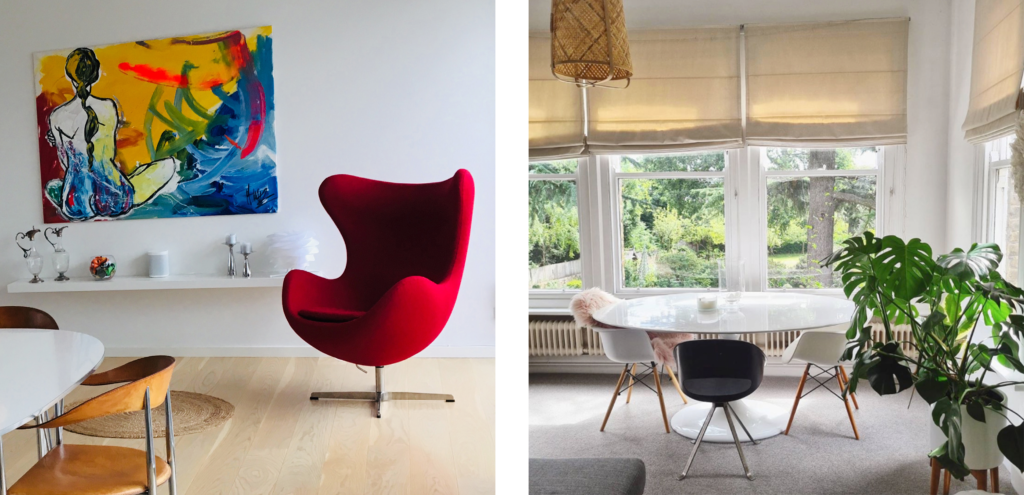
Saarinen Style Tulip Table Image @the_house_of_goodwin
Over the years, it has been found that humans still unconsciously prefer locations in an area where they feel protected and can sense their surroundings. For example, the popularity of one of the most iconic chairs might be related to this. Also, small alcoves set in larger spaces are often the places people gravitate towards. This is why neuroarchitects highlight the importance of being able to inhabit different types of spaces within your home.
The Main Stimuli In Your Home
Stimulation is the input and sensation we receive when one or more senses are activated, especially indoors. So let’s look at the main stimuli in your home and how we could adapt them to improve well-being.
Lighting
The level and colour of light present in your home can positively or negatively impact your brain. While intense white light activates your brain, warm, softer lighting can help reduce stress levels.
On the other side, unnatural blue lighting can negatively impact your sleep cycle, as it tricks your body into thinking it’s daytime. So try to stay aware of this when choosing artificial lighting for the rooms you spend time in during the evenings. TVs and computer screens have been known to emit blue light, therefore, a better night’s sleep is highly encouraged by turning these off before you go to sleep.
You should also try to include different light sources by using dimmers in the rooms where you spend time in the mornings and evenings, as this gives you the option of choosing the light level you want to have in the room.
Nature
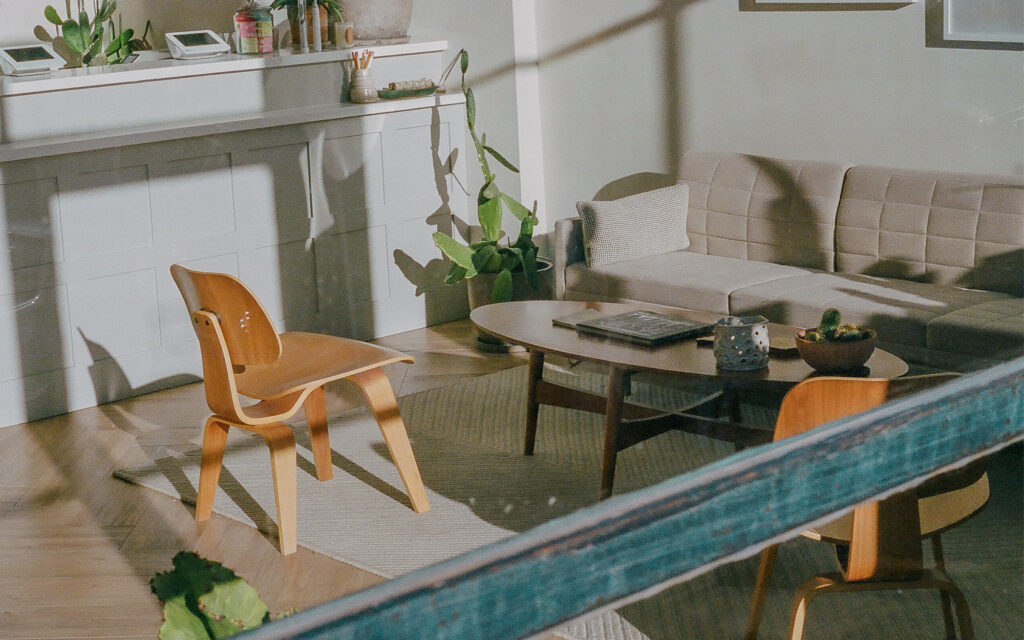
Many styles, such as the biophilic interior design and the ecological design, are based on evidence from extensive research that green surroundings and natural materials have a beneficial effect on our health and well-being. While indoor plants have been found to reduce stress and improve concentration, a great plant to incorporate into your home is an air-purifying plant. This is because they refresh the air, which has the benefit of increasing positive feelings. The most effective plants are Peace Lilies, Snake Plants, and Aloe Vera, which are also very low in maintenance.
Shapes
Rounded edges have been found to make individuals feel more relaxed compared to sharp angles. Studies have found that round decor is perceived as more friendly. Also, soft geometry used throughout your various home interior designs is a great way to create a flow throughout your living space.
Smell
Our sense of smell can sometimes be overlooked, but the right scent for your home can truly enhance any space. Considering different scents can create different feelings, you can plan individual scents for individual rooms within your home. For example, natural scents encourage relaxation, making them very effective in the living room. For your home office or kitchen, citrus scents can make you feel more awake and productive. On the other hand, using lavender scents in the bedroom can help encourage a better night’s sleep.
Colours
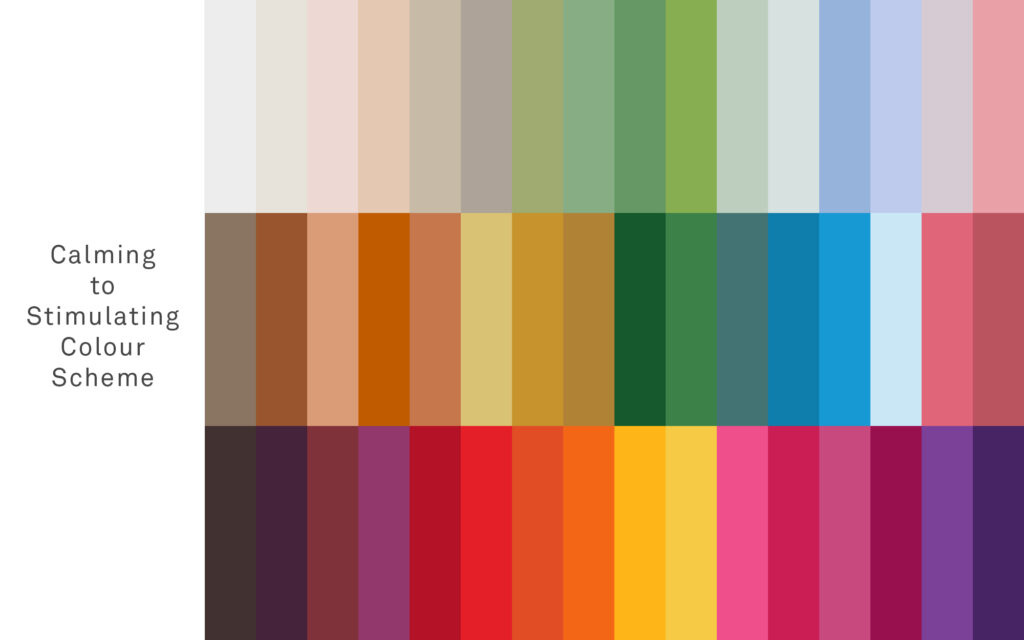
Colours act on different areas of our brains, which can affect our moods. Organic colours common to find in nature often trigger a calming and serene effect on our moods. However, intense colours such as red, orange, and yellow are more “triggering”, so we wouldn’t recommend using these colours too much in rooms that are meant for relaxing. Instead, these stimulating colours are highly recommended as feature colours, compared to calming colours that are great to use on walls and large areas. For more inspiration and colourful home interior design ideas, you can check out our Pinterest Board on Interior Colour Palettes and read our blog on How To Create A Complementary Colour Scheme In Interior Design.
Temperature
A well-balanced temperature is very important for creating a comfortable environment. Our brain is highly sensitive to sudden temperature changes, which may impact our cognitive performance and, on an emotional level, cause hostility.
Clutter
Items strewn around your home can cause you to feel drained, stressed, and chaotic. Subconsciously, when we walk past any type of clutter, our brain decides whether to put it away or leave it, hence why it has a negative impact on our well-being. This is simply because it causes us to constantly think and make decisions, which can feel overwhelming.
A great tip is to have a designated junk drawer that is great for items you don’t know whether to throw away yet or keep.
The Key To Approaching Neuroarchitecture At Home
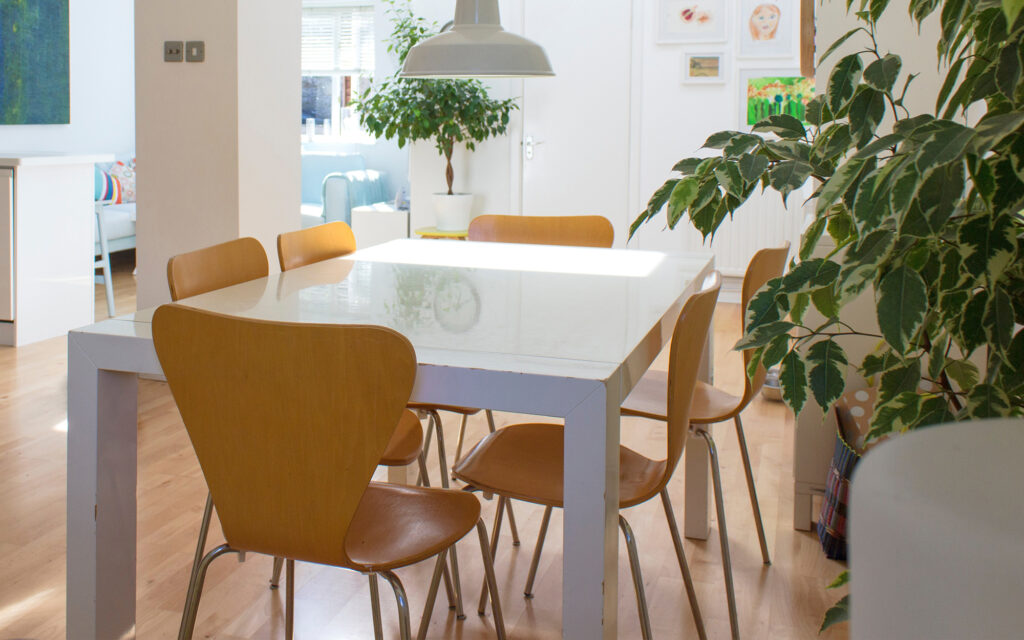
A very important aspect of modern home interior design is to truly understand yourself and how certain designs impact how you feel. For example, a large open-plan home may not make you feel comfortable enough if you are a strong introvert, whereas smaller spaces would be a better choice. The key is to Stay True To Your Own Interior Design Style at all times.
If you’re looking for a new home, think back to past experiences for clues on what works for you and what doesn’t. Try to create a design that works for your lifestyle and makes tasks easier. Start by placing objects and furniture in logical places, and put more thought into your new home interior design, not just whether it looks nice, but whether it is beneficial or not.
Neuroarchitecture is a relatively new and exciting design concept, and with enough research, the idea is to design future cities that will improve the health and social relationships of their inhabitants. So try to embrace this approach, and spread it with others looking for new ways of improving their home interior design!
Final Thoughts
Ultimately, the impact of your home interior design on your well-being is a deeply personal thing with no straightforward answers, so it’s very important to consider how these principles of interior design affect the way you feel.
Remember that every single aspect of a room can produce wildly different reactions in each individual. So try to pay a little less attention to what you think you like and a little more to how you actually feel!

